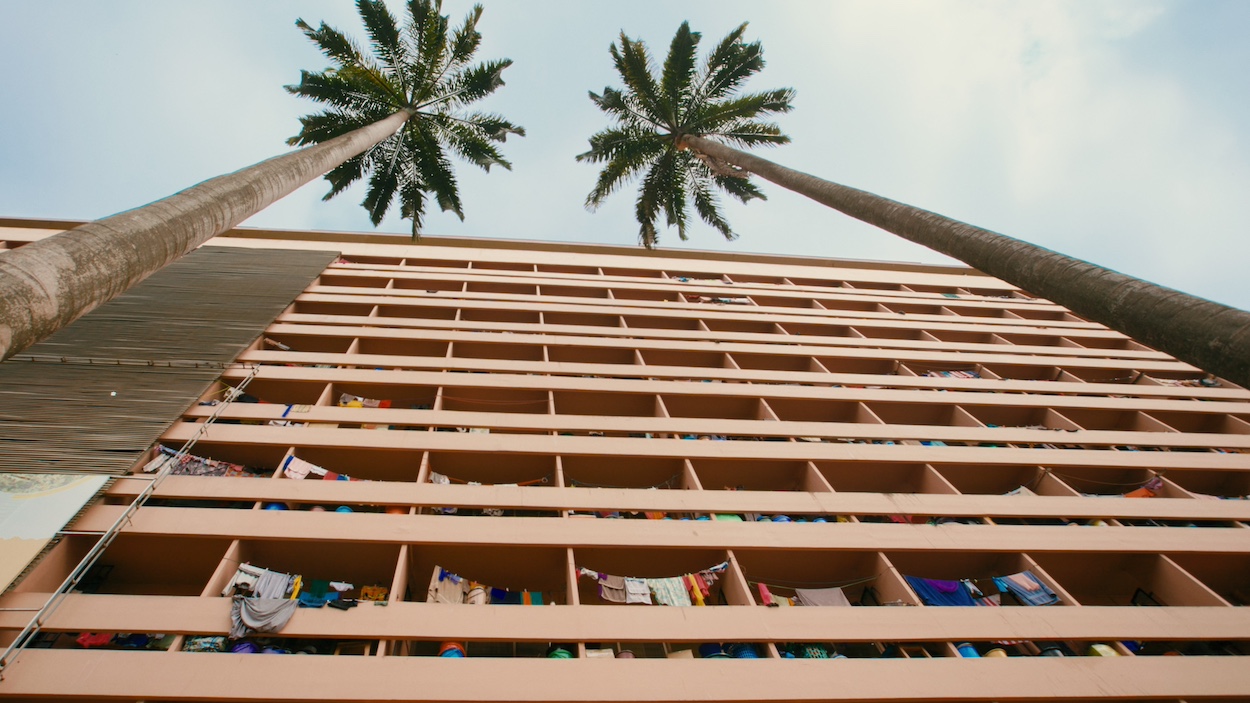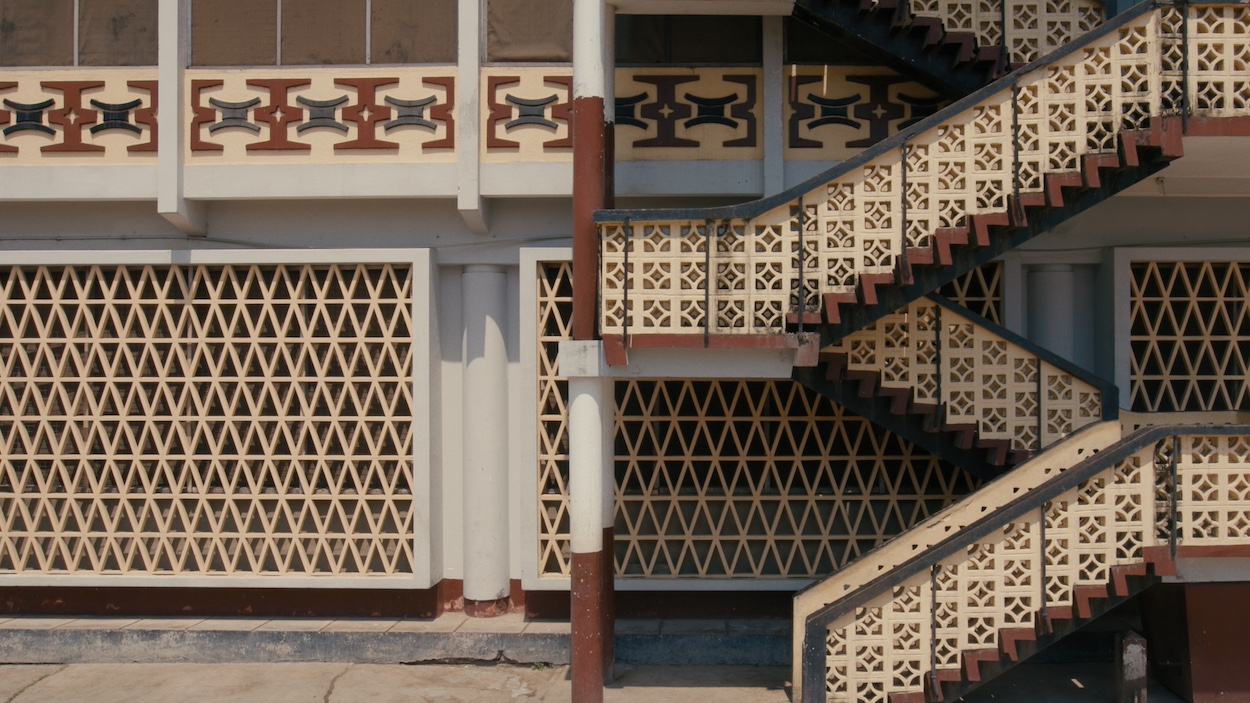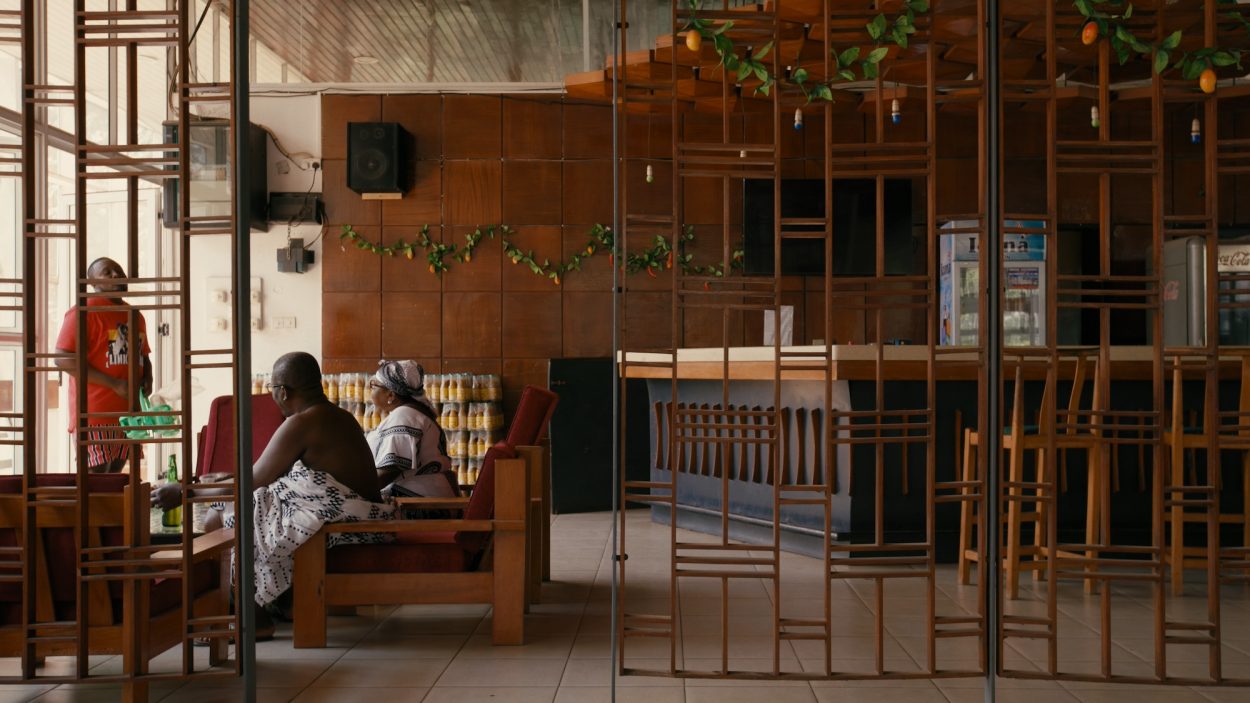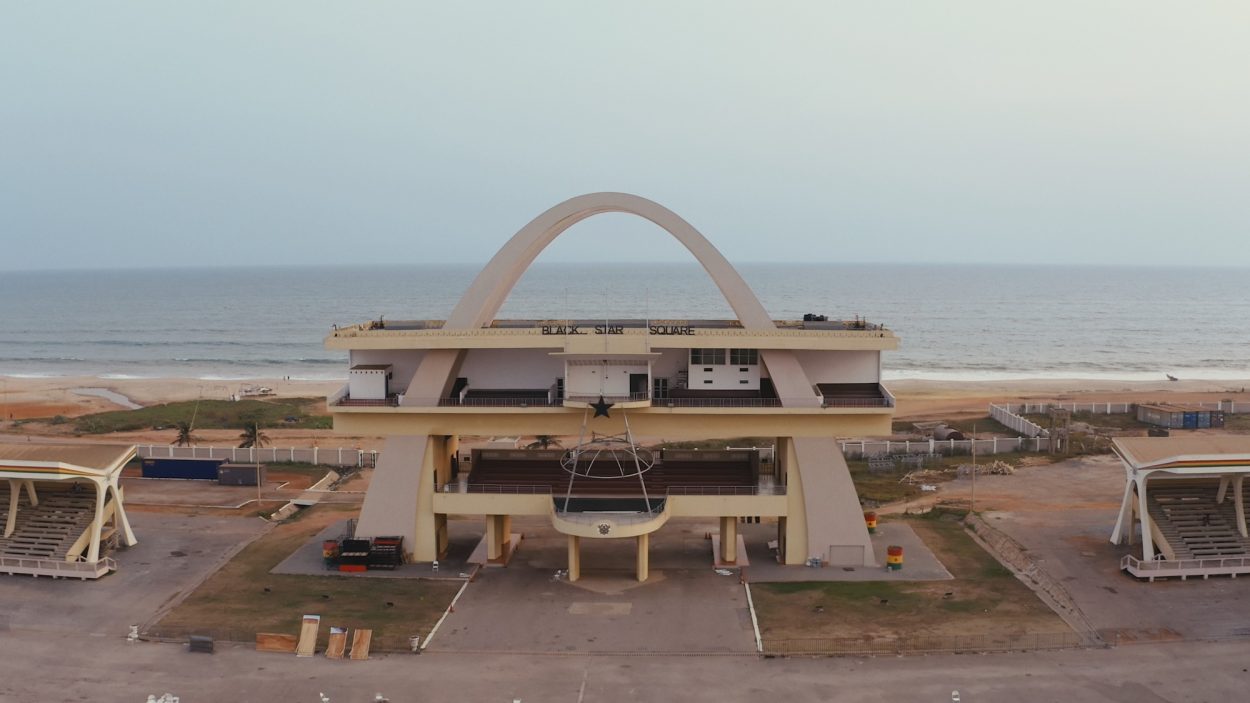In the mid-20th century, British architects Jane Drew and Maxwell Fry embraced the idea that Modernism could forge a utopian path forward as the world entered a period marked by post-war modernization and decolonization. The couple’s tradition-rejecting vision failed to convince conservative Brits about the merits of concrete and glass, so they seized the opportunity to put their principles into practice in West Africa, which was growing restless under British rule. To placate calls for independence, the government enlisted the duo to design public projects—community centers, educational buildings—that employed Modernist principles but were adapted for hot and humid climates. A style called “Tropical Modernism” was born, yielding buildings marked by brise soleils, adjustable louvers, and wide eaves that provide passive cooling while maximizing shade and ventilation.
The reality of Tropical Modernism, as a new show at the Victoria and Albert Museum suggests, is thornier. “The tropics” encompass around 40 percent of the world’s surface, but one of the nascent aesthetic’s key tenets was that “the same architectural language could be applied everywhere,” as David Robson, a former professor who published a book about Sri Lankan architect Geoffrey Bawa, once told Surface. Fry and Drew dismissed West African building traditions in favor of their own ideas, which often made superficial nods to regional symbols. The perforations in a Ghanaian school’s brise soleils that reference the crescent shape of a ceremonial Ashanti stool may have charmed students there, but likely wouldn’t be as welcome in Sri Lanka, where Bawa abandoned Tropical Modernism altogether. He instead pioneered a vernacular that fused colonial and Indigenous styles specific to the nation’s own monsoon climate and design legacies.





